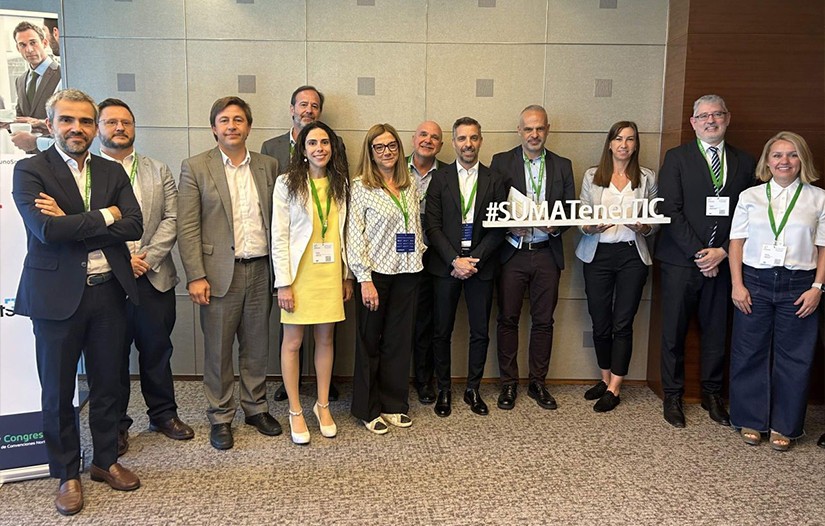The logistics and transportation industry needs to reinvent itself, by emphasizing collaboration, digitalization, and energy efficiency

The logistics and transportation industry was the focus of a recent Breakfast Colloquium organized by the enerTIC Platform, entitled“Innovation and digitalization in the logistics and transportation industry: confronting the new energy challenge”. This event featured participation by Magda Andrés Barrios, head of Business Development for GMV’s Industry sector, as well as representatives from the Spanish Transportation Association (AET), the Spanish Logistics Center (CEL), and the companies Grupo SESE, LW Cretschmar Española, Scania, SEUR Now, and Verallia, among others.
Currently, the logistics and transportation industry represents about 10% of Spain’s GDP, with annual revenues of more than €100 billion, 200,000 companies, and almost 1 million employees, according to data from Spain’s public exporting and foreign investment company (ICEX). In other words, this is an industry that plays a very significant role in the Spanish economy. However, it continues to be a highly traditional industry. In addition, and as expressed during the colloquium, it is an industry that is now facing a series of structural challenges, which it will have to confront if it wants to lay the foundations for its future development.
Firstly, the industry will have to overcome some challenges related to energy. One of these is the fact that the industry is closely linked to volatility in energy costs, which means that it is strongly affected by the significant increases and decreases that have been occurring recently in the prices of gasoline, diesel, and electricity. There are also other difficulties, such as the need for companies in the industry to electrify their vehicle fleets. Although this process is feasible for last-mile delivery, it is more complicated for long-distance transportation. The existing ranges of electric vehicles do not allow long distances to be traveled without recharging, but the Spanish highway system does not yet have an extensive network of charging stations. Nevertheless, companies in the industry are fully committed to improving energy efficiency and reducing their carbon footprints.
The second challenge emphasized at the colloquium was related to accelerating the digital transformation at companies, with the aim of remaining competitive and profitable in an industry where costs are so volatile. In relation to this, and as discussed during the event, the logistics and transportation industry continues to lag behind other industrial segments in terms of digitalization. This makes it essential to continue working on this aspect in order to adapt to the innovative technologies that are emerging, especially taking into account how quickly these new technologies are evolving.
One of the problems is an absence of skilled personnel with the type of training that would allow them to take the lead in these processes. This is therefore another notable challenge the industry is facing: a lack of talent. It is difficult to find young professionals who want to work in the area of logistics and transportation, and this is putting this industry’s generational transition at risk. In addition, employee priorities have changed, because in addition to salaries, many are now giving more importance to another series of benefits.
Solutions
In view of all this, the attendees at the colloquium agreed that there is a need to apply new models in the industry. Refusal to confront these challenges head-on is also seen as unacceptable, because this would jeopardize the future of an industry with an importance that has been clearly demonstrated. Indeed, during the pandemic this was the industry that made it possible for supermarkets and other retailers to keep products on their shelves.
Of course, these new models will have to be supported by technology, or to put it another way, technology must be the instrument that makes these new models possible. Fortunately, the first steps in the right direction are already being taken. For example, work is being performed on software that facilitates cargo planning and logistical optimization of routes. Thanks to technologies such as cloud computing, big data, artificial intelligence, and virtual reality, technological solutions are allowing fleet operation costs to be reduced, while improving customer service and increasing delivery efficiency. Energy savings are also being achieved for logistics facilities and for vehicles. In addition, the industry is seeing the emergence of “digital native” companies that are starting to operate in a different way, with a shift from traditional management models to more innovative new ones.
Collaboration
As a way to complement the processes described above, there is also a need to encourage collaboration and exchanges of collective intelligence, as a way to make progress towards these new business models. To do this, companies from the industry must develop the ability to adapt, and they must be willing to share information. Clearly, this will also involve implementing a process of standardization that will improve data interoperability among companies from the industry, governmental agencies, and customers, as a way to achieve more effective decision-making.
It is therefore essential to work in a different way, based on innovation and on reinventing an industry that has remained excessively traditional. Specifically, Next Generation EU funds could represent a good source of assistance, to help launch projects that can lead to a new way of working, with a focus on technological innovation and energy efficiency.